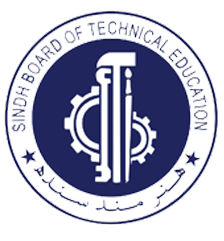
Greenwich Global College, mandated by the Sindh Technical Board & Inter Board Committee of Chairmen (IBCC), offers two years diploma in Digital Design leading to the equivalency of NVQF Level 5 / Intermediate.
After completing the two-year diploma, students can be admitted to the university. The diploma equips students to understand the fundamental art elements and design principles. Students explore techniques related to a variety of two and three-dimensional media. Gain craftsmanship to communicate ideas with the expressive qualities inherent in each medium.



| Term | Code | Course Title |
|---|---|---|
| 01 | GFP107BD | Basic Drawing |
| 01 | GFP103FD | Fundamental Design |
| 01 | GFP105HAC | History of Art and Culture |
| 01 | GFP204DFP | Digital Fashion Pro |
| 02 | GFP202UR | Urdu/Native Language |
| 02 | GGPR4202 | National Studies & Religious Education |
| 02 | GFP102IS | Islamic Studies |
| 02 | GFP101EN | English |
| 03 | GFP204PD | Print Design |
| 03 | GGIP9001 | Internship |
| 03 | GFP104IS | Introduction to Surface |
| 04 | GFP207DI | Digital Illustration |
| 04 | GFP206DTP | Digital Textile Print |
| 04 | GFP205DD | Digital Design |
1. Present facts in a systematic and logical manner.
2. Meet the language day-to-day demands.
3. Inculcate skills of reading, writing and comprehension.
1. Classify Elements and Principles of Art.
2. Material 2D and 3D model making.
3. Creating art work with the understanding of practices from previous eras.
1. Make a design for apparel & home furnish.
2. Understand how to create different basic designs.
3. Find color combinations with fabric structures, yarn materials and quality.
4. Classify the application of design, development of strategy and implementation of new technologies relative to design development, material choices, and the manufacture and distribution of fashion.
5. Develop the difference between the research board, mood board, and product board and learn how to create them.
1. Conduct structured research; analyze cultural and aesthetic trends, both historical and contemporary, on textile surface design products and use the information to develop creative design concepts.
2. Think critically, including evaluating visual information, comparing diverse perspectives, coming to fundamental conclusions and interpreting information to produce original designs for appropriate textile markets
1. Classify concept of pillars of Islam.
2. Contextualize Salah and importance of ablution(Wadu).
3. Develop a concept of importance of Holy book and basic concepts of Islam.
1. Present the facts in a systematic and logical manner in Urdu language.
2. Meet the Urdu language day-to-day demands.
3. Inculcate skills of reading, writing and comprehension in Urdu.
1. Critically evaluate the various dynamics and processes related to the study of History.
2. Gain familiarity with key primary sources and academic studies on different aspects of South Asian history in general, and Pakistan in particular.
3. Critically read and analyze texts on history.
4. Develop an ability to challenge meta-narratives of history.
1. Classify cultural and aesthetic prehistorical, culture, art, and innovations in pottery, color palettes, sculptures, region, religion, weather etc.
2. Contextualize design within the broader framework of historical, political, and cultural shifts.
3. Analyze texts (verbal, written, visual etc.)
4. Discover and expand on analytical and lateral thinking techniques.
5. Evaluate research skills and presentation skills and develop teamwork skills.
6. Create designs by using historical facts and driving innovations from different Eras.
1. Think vitally, including evaluation of visual information and comparing diverse perspectives.
2. Conduct market surveys, workshops, and visits to enhance their exposure and relation to the commercial field.
3. Apply fundamental craft skills to complement traditional and modern techniques and ability to implement comprehensive textile repeated creation and development of motif.
4. Design textiles through demonstrating basic skills in drawing, lay-outing, repeat creation, and color application.
1. Find theoretical and practical principles, emerging trends, and issues pertinent to textile design and related industries.
2. Relate structured research; analyze cultural and aesthetic trends, both historical and contemporary, on drawing and sketching.
3. Classify the concept of drawing and study its implementations in the field.
4. Apply fundamental craft skills to complement traditional and modern techniques and the ability to apply comprehensive drawing and sketching techniques.
1. Find basic information design, software, and essential tools of the software.
2. Conduct structured research; analyze cultural and aesthetic trends, both historical and contemporary, on textile surface design products and use the information to develop creative design concepts.
3. Evaluate visual information, compare diverse perspectives, come to fundamental conclusions, and interpret information to produce original designs for appropriate textile markets.
1. Introduction of software color, separation of color properties, working with layers and layer properties.
2. Creating color plaid print mock-up or design mapping on Photoshop.
3. Coordination of a garment with necessary styling components to visualize it as part of a complete fashion look.
1. Find basic information design, software and essential tools of the software.
2. Conduct structured research; analyze cultural and aesthetic trends, both historical and contemporary, on textile surface design products and use the information to develop creative design concepts.
3. Apply fundamental computer skills to complement traditional design skills and develop the original design.
| Description | Currency | Amount |
|---|---|---|
| Application Fee | PKR | 2000 |
| Admission Fee (One Time) | PKR | 50000 |
| Security Deposit (One Time, Refundable) | PKR | 20000 |
| Term Fee | PKR | 100000 |
| Board of Technical Education Registration Fee | PKR | 21000 |
| Following Fee are charged where applicable: | ||
| * Duplicate Identification Card Fee | PKR | 1500 |
| * Rechecking of Examination Fee | PKR | 500 |
| * Late Payment Surcharge | PKR | 5000 |
| * Marksheet Issuance Fee | PKR | 2000 |
| * Diploma Issuance Fee | PKR | 2000 |
| Important Note: 1. No payment will be accepted at any institute. 2. All payments are to be made in person at the bank or online payment methods via GGC Website. 3. All invoices must be cleared on time, students with outstanding dues will not be allowed to attend classes. 4. Fee structure is subject to change before beginning of the academic year. 5. Fee are non-refundable and non-transferable. 6. Fee paid on monthly basis will have additional charge of 10% on the invoice amount. 7. Fee above 200,000PKR is subjected to 5% Advance Tax u/s 236 or Income Tax Ordinance. | ||
GGC provides knowledge and confidence students need to embark on their study abroad journey by familiarizing them with academic standards of the international education system; offering students advanced placement opportunities at top international universities.
© Copyright Greenwich Global College 2024. All Rights Reserved
The photographs / Videos used in the website are of Greenwich Global College’s Students, Faculty and Management.